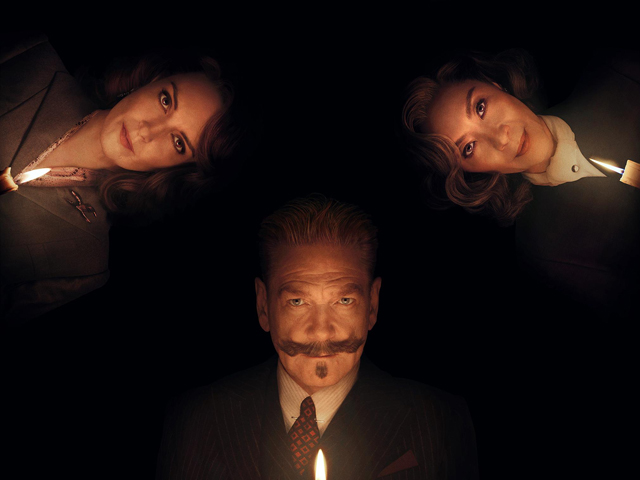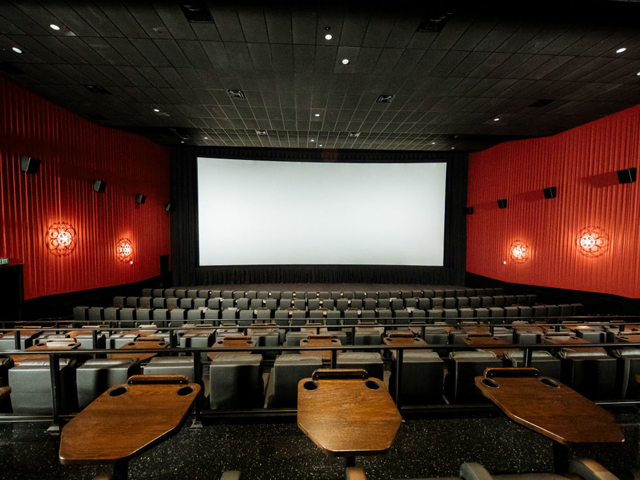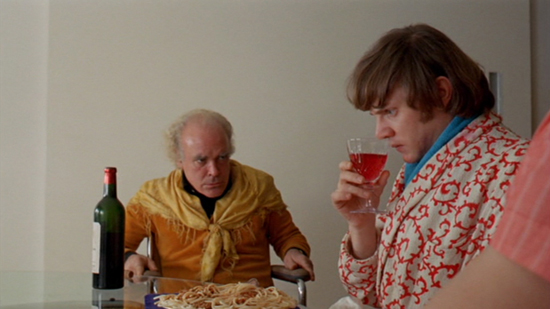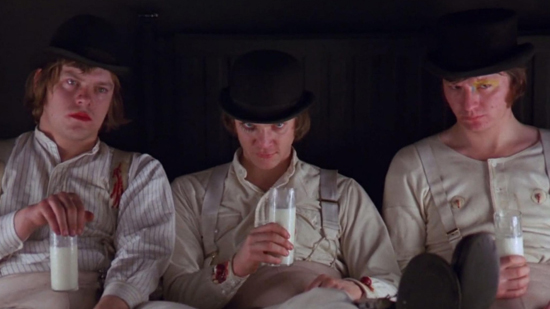
To theme park enthusiasts around the world, the Haunted Mansion ride at Disneyland is considered hallowed ground. The ride that opened at the Anaheim, California based theme park in the summer of 1969, and subsequently has spawned re-constructions of the same ride at Disney parks in Orlando, Tokyo, and Paris, is to many the pinnacle of ride engineering and theming. The ride system itself that propels guests through the attraction was cutting edge at the time; taking a conveyer line assembly of ride vehicles called Omnimovers (or Doombuggies in this case) and stringing them together in a continuous loop through the show building. But what made the Haunted Mansion stand out even more was the incredibly detailed theming throughout. Haunted house are commonplace in most amusement parks, but Walt Disney wanted to take the concept and do something special with it. He assembled his best “Imagineers” together to create a ride through attraction that used every trick in the book to immerse his guests in the experience. The team used old magicians tricks like “peppers ghost” reflections and endless hallway mirror effects and combined them with newer effects like the recently developed Audio-Animatronic technology. Haunted Mansion was developed as part of the New Orleans Square expansion at Disneyland, along with another landmark attraction called Pirates of the Caribbean. And while many guests were wowed by the effects and theming of the attraction, they were also intrigued by the mystery of the Mansion itself. Before it opened, a sign on the outside gate promised that the estate would be home to 999 “happy haunts” but they also have room for one more. Unlike any theme park attraction built before, even the nearby Pirates, Haunted Mansion had it’s own built in lore.
There was a story to the Haunted Mansion, which made it much more than just a ride. The 999 happy haunts were not just some random specters; they had names and a backstory. There’s the foreboding voice of the Ghost Host (performed by the legendary voice actor Paul Frees) that follows visitors throughout the ride; Madame Leota, the fortune teller trapped within her own crystal ball; the Bride who lurks alone in the attic; the Singing Busts that serenade your visit to the cemetery; the Hitchhiking Ghosts who follow you through the finale; and Little Leota who beckons you to “hurry baaack.” These were original characters that were found solely within the ride itself, and over time, they became just as famous within Disneyland as Mickey Mouse himself. Haunted Mansion revolutionized the idea of storytelling within a theme park attraction, and it would prove to be a forbearer for many attractions thereafter, both for Disney and elsewhere. Over the years, the lore of theme park attractions grew to a point where Disney felt confident that they could adapt them into theatrical films. The idea would be risky, because even though a ride like the Haunted Mansion has a story buried within it, it’s also not a linear narrative that could easily translate into a film. Disney initially tried to play it safe by giving their first theme park to movie translation project over to an adaptation of the Country Bear Jamboree. The Country Bears (2002) naturally didn’t light up the box office, but it also wasn’t a huge financial risk either. The bigger challenge would be in adapting the more ambitious Pirates of the Caribbean to the big screen. And while many thought Disney was crazy to spend a fortune on a movie based on a ride, Pirates of the Caribbean: The Curse of the Black Pearl (2003) ended up being a massive hit, launching it’s own billion dollar franchise in the process. With Pirates managing to succeed at bringing the experience of a ride to the big screen, it seemed only natural to select The Haunted Mansion as the next attraction to receive the movie treatment, given it’s already well known lore amongst the fans. Unfortunately, 2003’s The Haunted Mansion would not be a repeat of that success.
On paper, it all looked like things were perfectly aligned for The Haunted Mansion. Pirates of the Caribbean had proven the concept of turning a ride into a movie successful, becoming one of the year’s biggest hits at the box office. There was a lot of crossover appeal for theme park fans, as both Haunted Mansion and Pirates have this shared history within the park and close proximity at Disneyland in particular. There was all this built in lore that many fans of the ride couldn’t wait to see on the big screen for the first time. Not only that, but the film was going to be directed by one of the talents behind The Lion King (1994), which was the studio’s biggest it at the time. And it would star one of the biggest box office names in Hollywood. However, once we found out who that star was, it likely became the first sign for many of what would ultimately go wrong for the film. The Haunted Mansion had none of the creative spark that was found in Pirates of the Caribbean. The Pirates movie made the smart move to become it’s own adventure tied to it’s own lore, with only brief little nods to the ride for fun. It was less of an adaptation of a ride, and more of an original adventure piggybacking on a familiar name. The Haunted Mansion, on the other hand, feels nothing like an adaptation, or a salute to the ride. It just borrows the veneer of the well known ride and lays it over a lazily written, cliched family comedy. There’s none of the rich lore in the film; it’s just a vehicle to showcase a bunch of ride highlights, without any context to their importance. Sure, following in the wake of Pirates of the Caribbean was always going to be a challenge, but it is very clear that one film was delivered with a lot of thought and care put into it’s presentation, while the other was just meant to be there as a product.
Fundamentally, the biggest flaw that the movie has is that it doesn’t seem to really care about the ride it’s based on. Tonally it misses the mark entirely. Walt Disney envisioned the ride to be a place that felt spooky but never terrifying for the guests. This is perfectly illustrated through the progression of the ride, where the experience begins with it’s scariest moment. In an incredible effect that still wows to this day, guests enter a disguised freight elevator that is made to look like a portrait room. As the elevator descends, the room gives the effect that it is stretching, visualized through the unraveling of the portraits “hanging” on the walls. Once the room reaches the bottom level, the Ghost Host tells us how he managed to escape the room. The lights suddenly go out, a flash of lightning draws our eyes up, and a hanging corpse can be seen dangling above us. This is the scariest the attraction ever gets, and it’s right at the beginning. Things remain spooky for the first part of the ride, heading down dimly lit hallways, but the Ghost Host says that the spirts are feeling our “sympathetic vibrations” and decide to materialize before us to make us feel more welcome. From then on, going through a magnificent ballroom and then out to the cemetery, the atmosphere is festive, as the ghosts have their “swingin’ wake.” Not surprisingly, The Haunted Mansion movie doesn’t have anything remotely scary about it, and any attempt at it just feels forced and clumsy. The scariest part of the attraction, the Stretching Room, doesn’t even show up at all in the movie, though the opening prologue does show the origin of the hangman. It’s very apparent that Disney intended this movie to never go beyond PG in terms of scares, which just defeats the whole purpose of translating the experience of the ride into the movie. That’s why the movie leans far more into the comedy than the scares, because it’s just easy to play safe and within the bounds of the Disney brand that way. But, as the movie shows, they couldn’t even make the comedy work that well either.
The most apparent problem with the movie is that it just feels like an easy paycheck vehicle for it’s star; Eddie Murphy. Murphy is just a bad fit for this kind of movie. I understand why Disney pursued him for the role. Eddie was coming off of a career high point in the late 1990’s with the mega-successful remake of The Nutty Professor (1996), and he followed that up with well received roles in Dr. Doolittle (1998) and Bowfinger (1999), as well as successful vocal performances as Mushu in Mulan (1998) and as Donkey in Shrek (2001). Disney certainly believed that having his name on the marquee would be a huge advantage for the film. But, the style of Haunted Mansion the ride doesn’t fit well with the style of comedy that Eddie Murphy excels at. Murphy has always been at his best when he’s a wisecracking jokester, like in the Beverly Hills Cop movies, or as a fully immersed, over-the-top character like he did as the entire Klump family in The Nutty Professor. The Haunted Mansion gives him neither to work with. Here he’s just an over-worked Dad whose takes his family to the Mansion as a prospective real estate acquisition. Eddie Murphy’s trademark wisecracks just butts up against the tone that needs to be set for the movie to be like the ride. Every time the movie attempts to be spooky, you can always count on Eddie to deflate the moment with a poor attempt at a joke. It’s this clash that proves to be the most frustrating, because we all know how funny Eddie Murphy can be when he’s in his element, and how atmospheric the Haunted Mansion can be when it’s allowed to build it’s presence. The movie is trying to shoehorn the aesthetic of the Haunted Mansion, with all of it’s iconography and rich lore, into what is essentially a pale imitation of an Eddie Murphy family comedy. And you can tell that Eddie’s heart is not in it. Half of his performance is just going wide-eyed when he sees something scary, or delivering an over-the-top scream. Not a single funny beat lands, and it’s pretty embarrassing to watch so much talent be wasted.
Eddie Murphy is not the only miscast part of this movie. There is the completely non-sensical choice of casting actress Jennifer Tilly as Madame Leota. Like Eddie Murphy, Tilly can be quite good in a role that best fits her talents. But, she is definitely a bad fit for a role like Madame Leota. Leota is perhaps the character best remembered from the original ride; the disembodied head within a crystal ball. Apart from the iconic structure itself, Madame Leota is the most visible element of the ride seen in most of the theme park marketing for the attraction. Apart from her appearance, it’s her ethereal voice that also makes her stand out, delivered by the legendary Elanor Audley, a voice actress responsible for not one but two of Disney’s most iconic villainesses; Lady Tremaine in Cinderella (1950) and Maleficent in Sleeping Beauty (1959). Jennifer Tilly’s high pitched, shrill voice just doesn’t sound right at all, and her appearance also makes Leota feel too young. Leota should be this seasoned, old veteran and Ms. Tilly just sounds very amateurish and not at all ethereal like the character should be. The rest of the cast also feels either too wacky or too wooden. There’s a ghost footman and ghost maid played by Wallace Shawn and Dina Spybey-Waters that again tries to force out comedy in the film that just falls flat. The movie even forces an “inconceivable” out of Wallace Shawn that just feels desperate. Nathaniel Parker’s performance as the ghostly owner of the Mansion, Master Gracey, is unremarkable, as are the performances of the members of Eddie Murphy’s character’s family. The only passable performance is from Terrence Stamp as the villainous butler Ramsley. His performance is almost the right amount of camp spookiness that feels right at home with the tone that the Haunted Mansion is supposed to set.
One of the other big problems from this movie is that it just feels so bland. Director Rob Minkoff just takes this very flavorless approach to the filming of this movie. You could argue that he’s a filmmaker more comfortable in the realm of animation, which is where he got his start at the Disney Studio. But, The Haunted Mansion was not his debut as a live action filmmaker. Just a few years prior, he had directed Stuart Little (1999) and it’s 2002 sequel. He had already proven himself as a live action director, but like with Eddie Murphy, he was also a bad fit for this material. He approached The Haunted Mansion like it was one of the same kids movies he had worked on before. There is no sense of the foreboding atmosphere that the Haunted Mansion should have in this movie. The film has this glossy, effects heavy feel to it that makes the film feel more cartoonish than eerie. Albeit, there’s some interesting production design elements that’s attempting to make this mansion look unique and not just a carbon copy of the ride, and it features some great camera work from Award-winning cinematographer Remi Adefarasin (Elizabeth, Band of Brothers). But the movie as a whole has no creative drive to make all of those elements come together. Pirates of the Caribbean worked out because it felt like a lived in world where the characters were interesting and the adventure carried some heavy stakes. It didn’t have to rely upon a viewers’ familiarity with the ride; though it did reward you with some well placed Easter eggs. In The Haunted Mansion, the story and the characters lack any identity, which just makes the inclusion of the elements from the ride feel all the more unremarkable. We see familiar things throughout like the ballroom dancers, or the Hitchhiking Ghosts, or a memorable line here and there, and none of it carries any weight because the movie around it lacks anything worthwhile. The movie needed a vision behind it that was invested in doing justice to the atmosphere of the ride. The Pirates films had Gore Verbinski, who had a vision that perfectly matched the assignment. Rob Minkoff just feels like a hired hand who was just there to get the movie across the finish line. There was at one time a version of this movie that was put into development with Guillermo Del Toro involved. Sadly, nothing came of that movie, and it has since become one of those great “what if’s” in cinema history.
Disney did eventually return to the Haunted Mansion 20 years later with a second attempt at bringing the ride and it’s lore to the big screen. Emboldened by the success of the Jungle Cruise (2021) movie starring Dwayne Johnson and Emily Blunt, which grossed a respectable $100 million in a pandemic affected box office, Disney felt they could do right by the attraction with a new, more focused adaptation. Director Justin Simien, who once worked as a Disneyland cast member, seemed to be far more invested in getting a Haunted Mansion movie right, and the end result is a marked improvement over the failed Eddie Murphy version. Unfortunately Disney mishandled it’s release, choosing to put it out in July against tough competition like Barbie (2023), instead of saving it for a more appropriate Fall release in time for the Halloween season. Unfortunately, the newer Haunted Mansion failed to do any better at the box office than it’s 2003 predecessor, though it is vastly better in pretty much every way. I’d say that the one good thing about the failure of the Eddie Murphy Haunted Mansion is that it became quickly forgotten after it’s doomed release. Because the Pirates of the Caribbean movies were so popular, it ended up pushing Disney into making changes to the original ride much to the objections of Disneyland fans. The Pirates ride now has to reference the movies it inspired, with Johnny Depp’s Captain Jack Sparrow now shoehorned into scenes throughout the ride. Thankfully, the Haunted Mansion remains untouched. Can you imagine how bad a change it would be if they had Jennifer Tilly’s face in Madame Leota’s crystal ball (which Disney did seriously consider, before the movie tanked)? And ultimately that’s the one saving grace about the movie, is that it is so forgettable that it doesn’t reflect poorly on the ride that inspired it. The Haunted Mansion ride is still a timeless classic that remains just as popular as it has ever been, and the failed Eddie Murphy adaptation is just a footnote in it’s storied history. Between the two adaptations, you are better off seeing the flawed but still more respectable recent Haunted Mansion (2023), which does a more valiant job of trying to capture the atmosphere of the ride. It’s a deserving watch in this spooky time when ghosts are present, practicing their terror with ghoulish delight.














